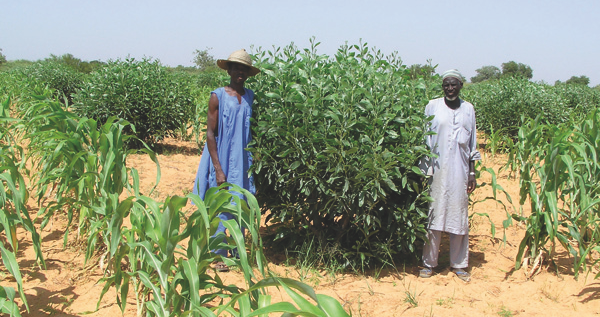Wattle We Eat for Dinner?

How Australian acacias can help in the fight against hunger and poverty in developing countries.
“August 1984, Niger Republic, West Africa: The rains had failed. Millet crops, which should have been two metres tall and piercing the sky with grain-filled heads, were brown and prostrate. It was my first experience of engaging with suffering people on a large scale; my awakening from a privileged life. This was not the 7pm news viewed from a comfortable couch. These were my friends. Real people really starve! I also realised that in any year, not just a drought year, there was a high likelihood of famine in Niger. People were hungry to one degree or other, every year. The same precarious situation occurs in many African countries where there is high population pressure on degraded landscapes and where people rely on a small number of crop varieties or animal species growing under low and unreliable rainfall conditions.”
These are the words of my colleague, Tony Rinaudo, who as a fresh-faced agriculture graduate from Myrtleford in Victoria, had decided to work in one of the poorest and harshest places on earth to help people climb out of the downward spiral of poverty. These were particularly bleak times: Niger, as well as other parts of Sahelian Africa and East Africa, was in the midst of acute famine. In the wake of the west’s “green revolution” farmers had decided to clear the trees from their land to plant their crops in “the modern way”. However, without irrigation, machinery and the other farm inputs we enjoy, the soil was blown or washed away, the sub-Saharan sun parched the earth so that crops would fail three years in five, new plantings were often blasted and buried by sandstorms and the communities who relied on their crops for their daily food were literally starving. Rinaudo soon came to the conclusion that rather than less trees, farmers needed more trees as they were the “glue” that kept the soil together, kept it fertile and helped keep moisture in the soil.
In seeking to solve problems of chronic hunger in developing countries and with the heightened sense of urgency emanating from the 2008 Global Food Crisis, governments and non-government organisations are looking for solutions to solve these malnutrition problems.
For centuries, the seeds of certain Australian acacias – commonly known as the wattle, our national flower – have formed a part of the diets of Australian Aborigines in various parts of the country. The sub-tropical, arid and semi-arid climate of Australia corresponds with many parts of the world that are subject to famine, such as the Sahelian region of Africa and dry regions of southern India.
Accordingly, certain Acacia species from Australia’s hot, dry regions have a high potential to provide human food and a range of other products and services, such as firewood and charcoal, stock fodder, soil stabilisation, windbreaks and soil fertility. A number of these acacia species thrive under conditions in which annual plants such as grain and legume crops barely survive.
The seeds from several species are tasty, safe to consume and nutritious, being high in protein, carbohydrates and fats. Acacia flour can be incorporated into a diverse range of food products, including over 20 local dishes in the Niger Republic, in both savoury and sweet local dishes in India, as well as pasta, bread, biscuits and coffee substitutes.
In the tropical drylands of West Africa, Acacia seeds ripen at a time of low labour demand when non-irrigated crops are not being cultivated. Being perennial and thus having an established root system, mature acacias can take advantage of out-of-season rains that would be ineffective for annual crops.
Acacia seeds are easily harvested and processed into flour using simple and existing local technologies. The seed also has great potential for feeding livestock. And because of their hard coating, seeds can easily be stored for many years and act as a famine reserve food.
Extensive trials conducted by World Vision and Serving in Mission (SIM) in Niger over the last three decades have led to certain species being integrated into crop fields. An important feature is that they have demonstrated no weediness. Comparing the acacia fields to control plots, estimates show that the acacia fields can produce five times the income of non-acacia fields.
For more than 30 years, Tony Rinaudo has championed the use of Australian acacias in dryland tropical regions to help change people’s lives. World Vision is currently conducting an agronomy and nutrition research program to see how it can partner with research organisations and business to take this initiative forward. With the level of child mortality and malnutrition across the Sahel, our Australian Wattle could be an incredible boon to mothers and children in some of the poorest countries in the world.
Rob Francis is the Project Manager, Farmer Managed Natural Regeneration, at World Vision. This article can be republished with attribution under a Creative Commons Licence.





